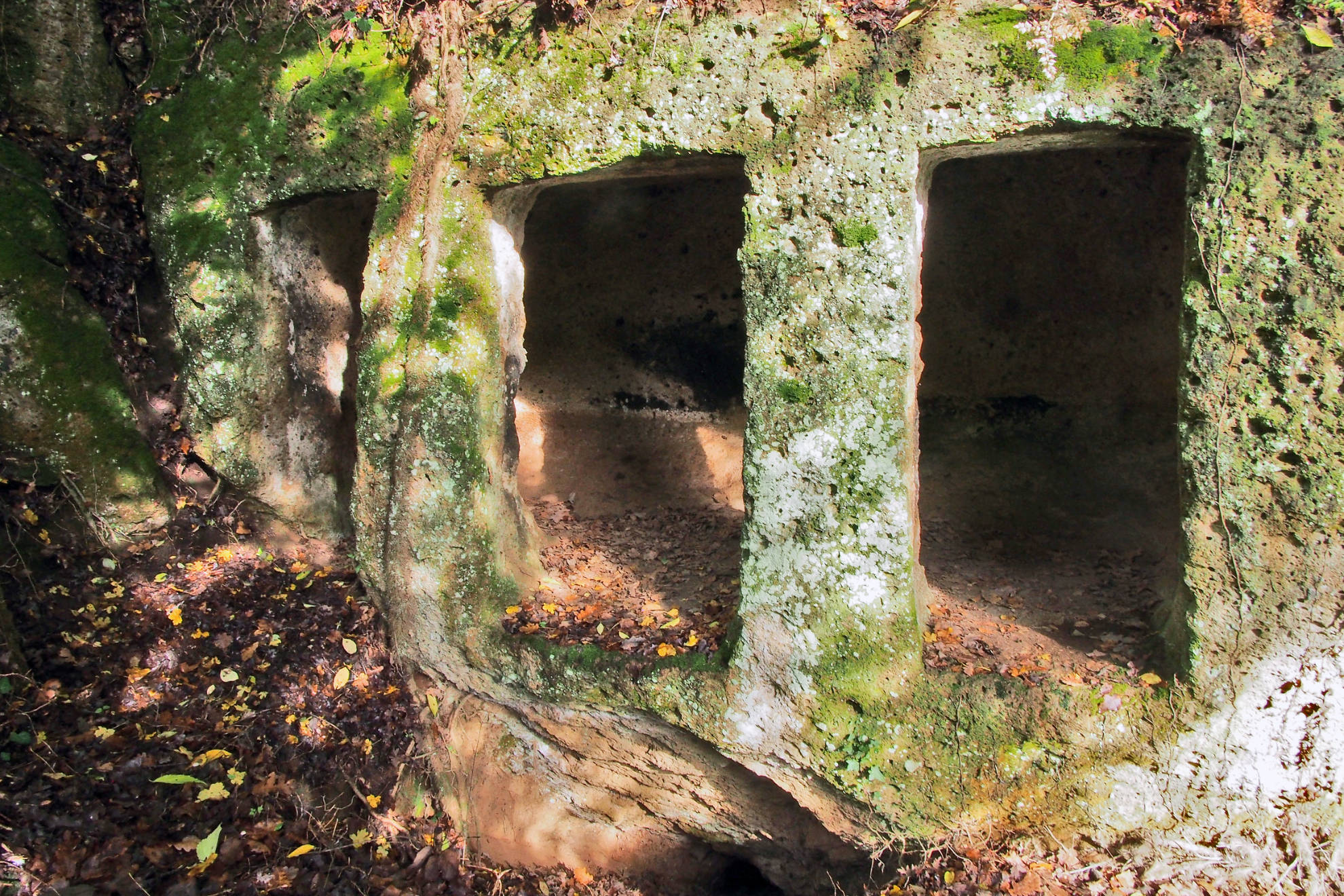It was once called Orcla, a lively city in the heart of the Viterbo Tuscia, inhabited since the Bronze Age, even if it was during the Etruscan time that it tasted its moment of fame and splendour.
It rose along the Via Clodia, the historic road that connected Rome to Saturnia, in the region of Cinelli, between Vetralla and Viterbo, right at the meeting point between the Pile, Acqualta and Biedano streams. It stood in an elevated position, strategic to defend itself from enemy raids and attacks of malaria, which in areas so rich in water and humidity constituted a real threat.
Ph. Roberta Venditti

Today, it is called Norchia and is one of the largest and most fascinating cave villages in central Italy, hidden in the valley at the end of a long avenue of white eucalyptus and cultivated land. A secret place, little known, little publicised and also little valued by the institutions.
As it was the city of the living, the acropolis, today we can only imagine it by observing the columbarium, the remains of the church of San Pietro, now inhabited by shrubs and shy lizards, or walking along the 'tagliata', the ancient long narrow streets, similar to cuts in the rock, perhaps the most characteristic of the many left by the Etruscans.
Ph. Roberta Venditti

The city of the dead, on the other hand, is still there, intact, carved into the reddish tuff rock, right in front of the waters of the Pile and Acqualta, hidden in a wild vegetation, which in autumn shows all shades of brown, yellow, red, green faded by rain and cold.

